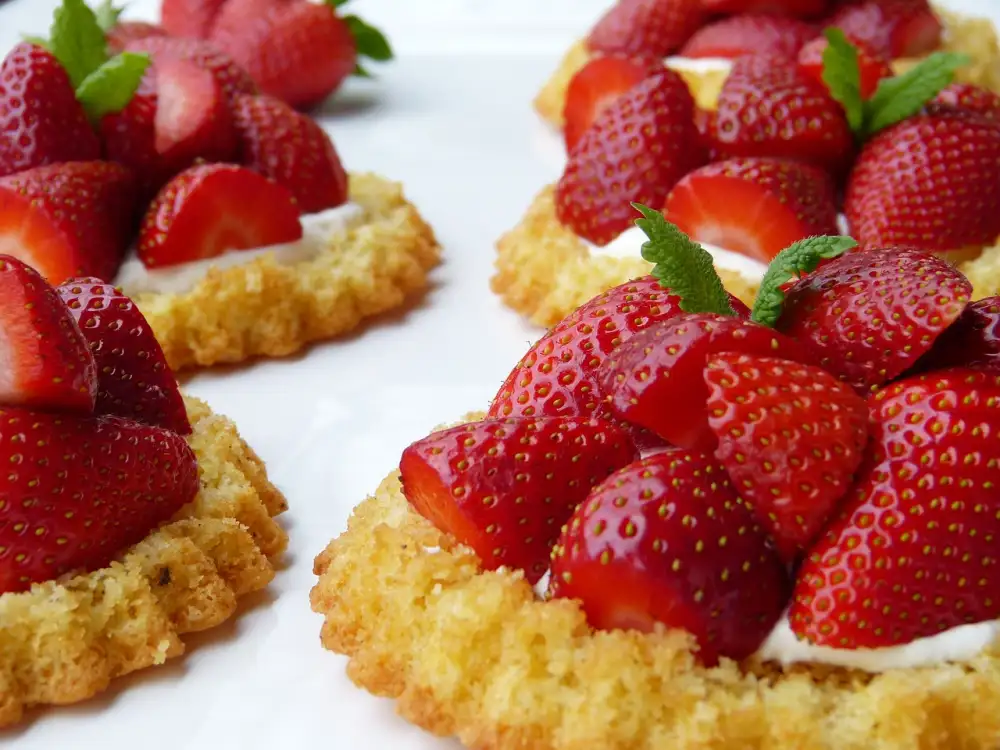Discover the Benefits of Gluten-Free Flour: Elevate Your Health with our Guide!

- Understanding gluten and its effects on health
- Benefits of using gluten-free flour
- Types of gluten-free flours available in the market
- Tips for baking with gluten-free flour
- Substituting gluten-free flour in recipes
- Health considerations for individuals with gluten sensitivities or celiac disease
- Exploring the nutritional value of gluten-free flour
Gluten-free flour has gained popularity in recent years as more people are becoming aware of the potential health benefits it offers. Unlike traditional flours, which contain gluten, a protein found in wheat, barley, and rye, gluten-free flour is made from alternative grains or starches. This makes it an excellent option for individuals with gluten sensitivities or celiac disease. In this article, we will explore the benefits of using gluten-free flour and provide tips for incorporating it into your cooking and baking routines. Whether you have dietary restrictions or simply want to experiment with new flavors and textures, gluten-free flour can elevate your culinary creations while promoting better health.
Understanding gluten and its effects on health
Gluten is a protein found in wheat, barley, and rye. For individuals with celiac disease or gluten sensitivities, consuming gluten can lead to various health issues. When these individuals consume gluten, their immune system reacts by damaging the small intestine lining. This can result in symptoms such as abdominal pain, bloating, diarrhea, and fatigue. Long-term consumption of gluten for those with celiac disease can lead to nutrient deficiencies and serious complications. Understanding the negative effects of gluten on health highlights the importance of exploring alternatives like gluten-free flour for improved well-being.
Benefits of using gluten-free flour
Using gluten-free flour offers numerous benefits for individuals looking to improve their health and well-being. Firstly, it allows those with gluten sensitivities or celiac disease to enjoy a wide range of delicious baked goods without experiencing uncomfortable symptoms. Additionally, gluten-free flour can help promote better digestion and gut health, as it is easier for the body to break down and absorb. Moreover, incorporating gluten-free flour into your diet can lead to increased energy levels and improved overall vitality. Lastly, using gluten-free flour opens up a world of culinary possibilities, allowing you to experiment with new flavors and textures in your cooking and baking endeavors.
Types of gluten-free flours available in the market
When it comes to gluten-free flours, there are several options available in the market today. One of the most popular choices is almond flour, which is made from finely ground almonds. It adds a nutty flavor and moist texture to baked goods. Another common option is coconut flour, which is made from dried coconut meat. It has a mild taste and absorbs liquid well, making it ideal for baking. Rice flour, made from ground rice grains, is another versatile gluten-free flour that can be used in a variety of recipes. Other options include tapioca flour, sorghum flour, and chickpea flour. Each of these flours has its own unique properties and flavors, allowing you to experiment and find the perfect fit for your culinary creations.
Tips for baking with gluten-free flour
When baking with gluten-free flour, there are a few tips to keep in mind. Firstly, it is important to understand that gluten-free flours have different textures and absorption rates compared to regular flour. Therefore, it is advisable to follow recipes specifically designed for gluten-free baking or use a blend of gluten-free flours.
To improve the texture and rise of baked goods, adding xanthan gum or guar gum can be helpful. These ingredients act as binders and help create a more elastic structure in the absence of gluten.
Additionally, it is recommended to sift the gluten-free flour before using it in recipes. This helps to remove any lumps and ensures even distribution throughout the batter or dough.
Another tip is to increase the liquid content slightly in recipes when using gluten-free flour. This can prevent dryness and result in moister baked goods.
Lastly, be mindful of baking times and temperatures. Gluten-free baked goods may require longer baking times at lower temperatures to ensure they are fully cooked without becoming overly browned.
By following these tips, you can achieve better results when baking with gluten-free flour and enjoy delicious treats that are safe for those with gluten sensitivities or celiac disease.
Substituting gluten-free flour in recipes
Substituting gluten-free flour in recipes can be a bit tricky, but with the right techniques, you can achieve delicious results. When using gluten-free flour, it's important to remember that it doesn't have the same binding properties as regular flour. To compensate for this, you can add xanthan gum or guar gum to your recipes. These ingredients help to mimic the elasticity and structure that gluten provides. Additionally, you may need to adjust the liquid content of your recipe as gluten-free flours tend to absorb more moisture. Experimentation is key when substituting gluten-free flour, so don't be afraid to try different combinations and ratios until you find what works best for your desired outcome.
Health considerations for individuals with gluten sensitivities or celiac disease
Individuals with gluten sensitivities or celiac disease need to be particularly cautious when it comes to consuming gluten. Gluten can cause inflammation in the small intestine, leading to a range of symptoms such as abdominal pain, bloating, diarrhea, and fatigue. For these individuals, using gluten-free flour is essential to avoid triggering these adverse reactions. By substituting regular flour with gluten-free alternatives, they can still enjoy their favorite dishes without compromising their health. It's important for those with gluten sensitivities or celiac disease to carefully read labels and choose certified gluten-free flours to ensure their safety.
Exploring the nutritional value of gluten-free flour
Gluten-free flour offers a range of nutritional benefits that make it a valuable addition to any diet. While traditional wheat flour is often fortified with vitamins and minerals, gluten-free alternatives can provide similar or even higher levels of nutrients. Many gluten-free flours are made from nutrient-rich ingredients like rice, quinoa, almond, and coconut. These flours can be excellent sources of fiber, protein, healthy fats, vitamins, and minerals. They also tend to have lower carbohydrate content compared to wheat flour, making them suitable for individuals following low-carb diets. By incorporating gluten-free flour into your cooking and baking, you can enhance the nutritional value of your meals while enjoying delicious and satisfying dishes.
In conclusion, embracing the versatility and health benefits of gluten-free flour can be a game-changer for individuals with gluten sensitivities or celiac disease. Not only does it allow them to enjoy their favorite dishes without discomfort, but it also opens up a whole new world of culinary possibilities. With a wide variety of gluten-free flours available in the market, there is no limit to what you can create in your kitchen. So why not elevate your cooking skills and enhance your health by incorporating gluten-free flour into your recipes? Start experimenting today and discover the wonders of this remarkable ingredient!
Published: 20. 12. 2023
Category: Health



